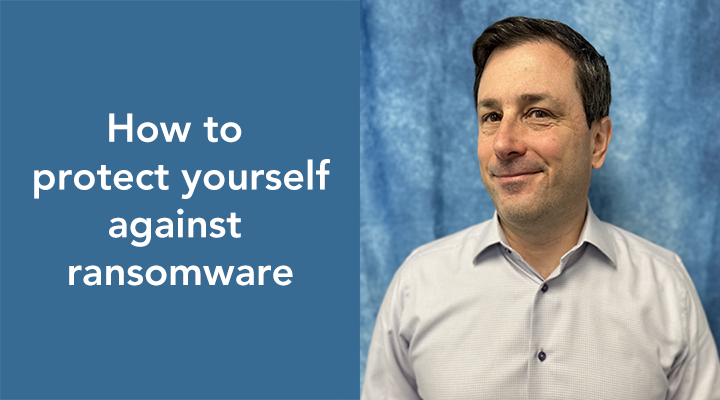Sunday is National Doctors Day. It’s something I note every year because I’ve always had a lot of doctors in my life. Some are clients. Some are friends. Some are family. And a dozen years ago, I added another category: the doctors who quite literally saved me.
I don’t like going into the gory details (although that could change at happy hour). Suffice it to say that when fate knocked me flat, I spent months recovering. During those months, I saw, up close and personal, what doctors really do. The long hours. The judgment calls. The emotional heavy lifting. The endless documentation. And yes, the awkward small talk while inspecting parts of your body you normally keep off-limits.
So, I’ll start this post the way I start a lot of conversations with the physicians I work with: thank you.
Thank you for showing up even when you’re exhausted. Thank you for keeping it together when your patients and their families are falling apart. Thank you for caring enough to double-check something that doesn’t look quite right. And thank you for giving people like me the chance to make a full recovery and go back to doing things like writing blog posts about National Doctors’ Day.
Now that I’ve gotten the sentimental part out of the way, let’s talk about the part of healthcare I actually know something about: tech.
What Doctors Shouldn’t Have to Worry About
Every doctor I know — whether they’re a client or a friend venting during half-time — wants to practice medicine, not IT support.
But the reality is, modern medicine runs on technology. And when that tech doesn’t work, or doesn’t comply with regulations, or just makes life harder instead of easier, guess who’s the one stuck dealing with it? The doctor.
They’re the ones getting frantic texts from staff about the patient records going down. They’re the ones fielding complaints from patients who didn’t get a message or reminder. They’re the ones ultimately responsible when something goes wrong, even if it’s a software glitch, a hardware failure, or a cybersecurity issue.
Which is why we do what we do.
We Don’t Wear White Coats, But We Do Make Rounds and House Calls
One of the best parts of working with healthcare clients is how quickly we get to see the impact of good IT.
When we optimize a system and patient records load quickly, securely, and without crashing in the middle of a consult, everyone’s pulse stays steady. And when a HIPAA compliance checklist threatens heartburn, we’re happy to help avoid a red-tape code blue.
We’re not miracle workers (we leave that to physicians), but we are really good at solving the kinds of tech issues that quietly make doctors miserable. That’s our “practice,” where we specialize in cures like:
– Network security that doesn’t slow you down (because your staff shouldn’t need an IT degree to log in).
– Documents and images that actually work with your workflow (instead of against it).
– Secure messaging, remote access, and data storage solutions that keep you compliant (and sane).
– Proactive monitoring that catches issues before they disrupt a full day of patients.
– Scalable tech that grows with your practice, so your systems aren’t the reason you say no to expansion.
We even have our own ER procedures, including 24/7 rapid response when emergencies occur and house calls when hands-on treatment is required.
I’ve heard too many doctors say, “I didn’t go to medical school to spend my day fixing printer settings.” That’s our job, because the less time doctors spend fiddling with tech, the more time they have to do what only they can do.
HIPAA Is Not a Suggestion
Every healthcare practice we work with has one thing in common: HIPAA compliance is non-negotiable. But staying compliant isn’t always straightforward. Systems age. Staff turnover happens. Workarounds creep in. And before you know it, something small turns into something reportable.
That’s why we build HIPAA-aware infrastructure from the ground up. It’s why we build-in computer-enforced data-handling policies to avoid common compliance risks. It’s why we document everything and conduct regular check-ups to make sure your system is healthy.
And yes, it’s why we’ll occasionally give doctors and their staffs a gentle but firm “you can’t do that” when someone wants to email patient data over public Wi-Fi.
If I can keep physicians highly productive, out of trouble, and off the evening news, I’ve done my job.
My Personal Stake in This
Maybe I feel so strongly about this because I’ve had more MRIs than most people have houseplants. Maybe it’s because I’ve sat in waiting rooms with that nervous flutter in my stomach, hoping for good news about a loved one. Maybe it’s because I’ve watched doctors (actual humans, usually highly overworked) stay late, skip meals, and go the extra mile for someone like me.
Or maybe it’s because I’ve spent enough time in hospital gowns to realize that most tech people don’t fully understand what’s at stake when systems fail in a medical setting.
I do.
I’ve been the patient. I’ve been the dad whose child was suffering from something unknown. I’ve been the guy reading the after-visit summary three times to make sure I didn’t miss anything. And now, I’m the tech partner who knows what it means when a doctor can’t access a chart, or when the server goes down just as the day’s patients start to arrive.
That’s not just inconvenient. It’s unacceptable. And it’s why I take our work personally.
Say Ahh…
This Doctor’s Day, I want to say this out loud: Thanks for doing what you do.
Those sighs of relief from thousands of patients and family members are all tributes to you.
And I promise, we’ll keep doing what we do to make sure tech is never the thing standing in your way.
Pictured: My doctor friends call me “Dr. Tech.” One of them lent me his stethoscope for this post.




